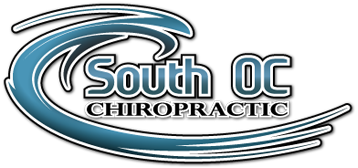
Spinal Disc Injuries & Chiropractic Treatment for herniated Discs
Spinal discs act as a shock absorber for the entire spine. Since spinal discs have very poor blood supply, they depend upon the circulation of joint fluids to bring in nutrients and expel waste through imbibition. If a spinal joint loses its normal motion and this pumping action is impaired, the health of the disc deteriorates leading to a lack of shock absorption and decreased spacing for spinal nerves. Like a wet sponge, a healthy disc is flexible. A dry sponge, however, is hard, stiff, brittle and can crack easily. This is how many disc problems begin.
Spinal Disc Injuries
Because of the way each disc is attached to the vertebra above and below it, a disc cannot "slip" as commonly thought. However, trauma or injury to the spine can cause discs to bulge, herniate, or worse, rupture. This can be quite painful, putting pressure on the spinal cord and nerve roots, interfering with their function. Chiropractic treatment for herniated discs usually focuses on restoring optimal motion and position to the spinal joint. Besides reducing the chance or size of disc herniation or bulging, better spinal function helps reduce inflammation and begins the process of healing the surrounding soft tissues. Many patients have avoided surgery or a dependency on pain pills, by choosing conservative chiropractic care for their herniated or degenerative disc problems. The traditional approach to disc bulge treatment often ignores spinal function leaving the problem to return and worsen with age. Conservative chiropractic care is much safer and often more effective than back surgery. Because they are attached to vertebrae, discs do not slip, but they do tear; bulge, herniate, prolapse and desiccate which can all be properly evaluated by a licensed chiropractor.
DISC TEARS AND HERNIATIONS
The most common disc injury is a small crack or micro-tear in the tough, outer cartilage material of the disc called annular fibers. This allows the fluid to start leaking out, and the disc begins to wear thin. The annular tear is one of the most common issues experienced as a result of aging. Traumatic injuries, usually experienced by active people can result in serious injury, and is a major cause of annular tears to spinal discs. Chiropractic treatment can help patients suffering from annular tears or herniated discs to get rid of the pain without undergoing any surgery and help prevent future problems from recurring.
BULGING DISC
The soft jelly-like material, called the nucleus pulposus, in the middle of the disc pushes to one side, forward or backward, and swelling occurs due to the warping of the disc which can cause direct pressure to spinal nerves. The bulging of the disc leads to a pinched nerve. The nucleus is still contained within the tough outer annular fibers of the disc, but can still cause pressure and painful symptoms.
HERNIATED DISC
The soft jelly-like material from the nucleus in the middle of the disc ruptures through the tough, outer fibers and extends to the outer edge or beyond the normal limits of the disc. The herniated disc can result in severe neck and back pain many times causing radicular pain down the legs (sciatica) or into the arms and hands causing similar symptoms to carpal tunnel in some cases. One of the most effective treatments for herniated or bulging discs is gentle Chiropractic care and adjustments with decompression therapy.
SEQUESTERED DISC
A piece of disc material separates and becomes a fragment or a free-floating piece. With age, the intervertebral discs tend to lose water content causing the disc to become brittle. As a result, the disc can break and fragment migrating into the spinal canal causing the patient to experiencing radiating pain in the legs, knees, and thighs. Sometimes this will lead to a decrease in back pain but a significant increase in leg pain and sciatica when the disc fragments. If a sequestered disc is found on MRI then patients will need an evaluation with a neurosurgeon as these cases can lead to permanent neurological injury and may require surgery.
DESICCATED DISC
The vertebral disc is around 80% water, so when it loses hydration and degenerates down to a rough, worn-down or worn-out appearance this leads to arthritis or arthropathy occurring and the bones can begin to fuse together. Seeking chiropractic care is a great way to treat herniated discs as it does not involve any medication or dangerous surgeries
THE INTERVERTEBRAL DISC
While the intervertebral disc is a common culprit in spine-related health problems, its function is widely misunderstood. Discs mainly act as a shock absorber for the vertebrae, and nervous system so they can protect the delicate spinal nerves that help to send signals to and from the brain. Decreased water content in the intervertebral discs, known as dessication, can cause the patient to experience severe pain due to neurological irritation. If not treated properly, the pain can progress and worsen overtime due to further degeneration and arthritis.
If you would like to have your spine and discs evaluated feel free to contact our office by submitting a consultation request at: https://www.southocchiropractic.com/contact/If you have questions feel free to email Dr Hamilton
